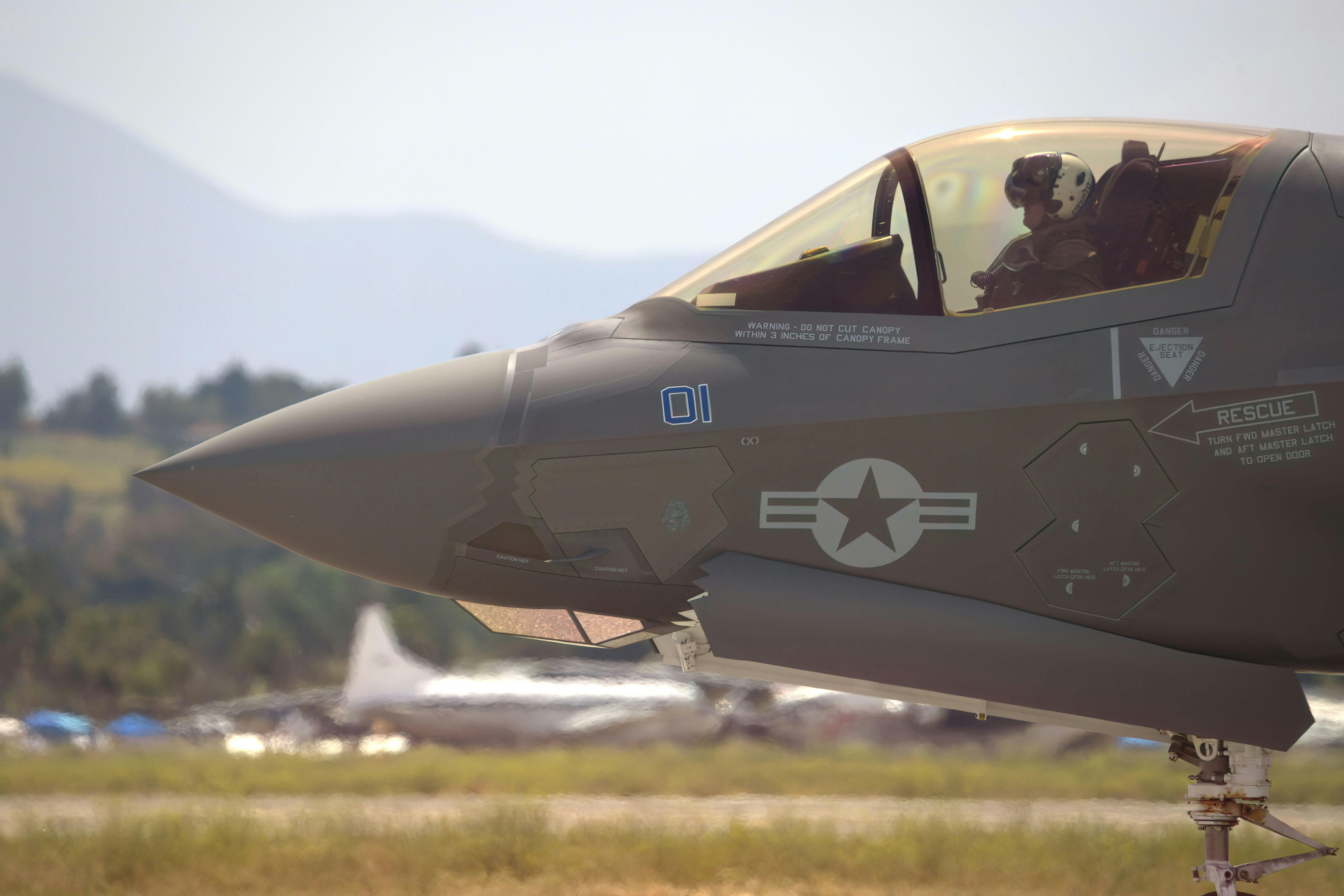In January 1942, nearly a month after imperial Japan’s surprise attack on Pearl Harbor drew America into the Second World War, President Franklin D. Roosevelt delivered his Annual Budget Message to Congress, laying out fiscal measures necessary “to continue our role as the Arsenal of Democracy.” In his address, the President did not mince words, declaring: “Powerful enemies must be outfought and outproduced … so that there can be no question of our ability to provide a crushing superiority of equipment in any theater of the world war.”
At the time of this address, one might have been hard-pressed to envision how our nation, with an Army that had ranked 39th in the world for military strength and relied on horses to pull artillery just three years before, could quickly transition from a peace economy to one mobilized for wartime production. But it did, thanks in no small measure to public-private collaboration between the US government and commercial businesses, as well as the 24 million laborers – including 8 million women – who produced the supplies critical to the war effort. Companies like Chrysler made fuselages; General Motors produced airplanes, guns, trucks, and tanks; and the Ford Motor Company remarkably built a B-24 Liberator long-range bomber every 63 minutes to give American GIs a fighting chance overseas. At peak production between late 1943 and early 1944, the United States was manufacturing as many munitions as its allies and enemies, combined. By leveraging the potential and ingenuity resident within these commercial entities (and thereby expanding its industrial base), the United States and her allies prevailed over the Axis Powers of the day, bringing a decisive end to WWII.
Since that time, the defense industrial base (DIB) has continually evolved in size and composition, and it’s easy to forget the outsized role that commercial entities once played in ensuring not only our victory, but the spread of democracy around the world. Indeed, throughout much of the 20th century, dual-use companies were vital in establishing our military as the world’s premier armed force and allowing our nation to project strength and deter acts of enemy aggression. With the consolidation of defense-focused contractors in the 1990s, however, today’s DIB is dominated by a small number of defense primes, which impedes competition, nimbleness, and the risk-taking needed to truly innovate at speed. Our nation’s over-reliance on this limited few is to our detriment and we shouldn’t assume that industry could quickly scale and pivot to meet an emergent threat.
It’s also important to remember that it took the U.S. more than a year to reach peak production upon entering WWII, and that we had been laying the foundations for wartime production in the prior months. Should the U.S. face another Pearl Harbor, we would not have the luxury of time – or allies already in the fight – to transform factories and provide the supplies and advanced technologies to secure our victory. This is why we must be proactive – not reactive – in our planning and posture. The time is now for the DoD to re-envision its DIB and take immediate and meaningful steps to encourage new commercial entrants, which are uniquely capable of building and deploying state-of-the-art defense technologies.
We can do this because we largely know what the threats are and what is needed. Today, the DoD is grappling with an increasingly complex and challenging geo-political environment where emboldened near-peer competitors have become more antagonistic, threatening U.S. interests both at home and around the globe. We’re seeing with increasing alarm the lengths that these nation-states are willing to go, as they jockey to show their might militarily (either directly or through their proxies) and expand their influence to establish a new world order. In Europe, for example, the war in Ukraine rages on, three years after Russia invaded the Ukrainians’ sovereign territory. In the Middle East, Iran continues to be a destabilizing force, inaugurating its first drone-carrier warship; trading barbs – and missiles – with Israel; and backing rebel organizations like the Houthis who regularly attack international shipping and U.S. military vessels in the Red Sea. In the Indo-Pacific, as China wages cyberwarfare against critical U.S. infrastructure, its warships and fighter jets escalate tensions with confrontational moves against allies and U.S. forces in the area. Further complicating matters is North Korea which, in addition to sending soldiers to Ukraine to support Russia’s war, has vowed to boost its nuclear program. And we must not forget that non-state threat actors continue to be a menace both at home and abroad.
As a former senior official at the White House Office of Management and Budget and a Senate-confirmed Assistant Secretary of Defense for Readiness in the Pentagon, I am a firm believer in the axiom that the best offense is strong deterrence. I know that the key to making our enemies reluctant to wage war against the United States is ensuring they understand that we have at our disposal advanced technologies and capabilities that are far superior to anything they might have or be able to access. Commercial entities, particularly small defense-tech businesses, are vital to driving and delivering the kinds of innovations necessary to achieve this mandate. These companies are not only more agile and less risk-averse, they also have the capacity to execute quickly on concepts.
In my current role as President of Red Cell’s National Security Practice – where we focus on industrial resilience, operational readiness, and force capability – my job is to recruit and partner with the most talented entrepreneurs that will create state-of-the-art tech-enabled solutions for the DoD. I have seen firsthand how dedicated these mission-driven individuals are and it is an absolute privilege to support their efforts to contribute to our nation’s security. In fact, many of them have military, government, and intelligence community backgrounds and they view their incubations as a continuation of their services. They also have an invaluable understanding of the assignment at hand and are committed to seeing it through.
Despite the benefits that these companies bring, we have yet to see DoD fully take advantage of the contributions they and their peers seek to make. Indeed, as of FY 2023, only ~1 percent of contract awards reportedly went to VC-backed tech companies, and other reporting shows that defense primes represent almost 40 percent of defense contract spending. Contributing to this imbalance are onerous contracting and financial regulations which, combined, total more than 13,000 pages. Many of these are products of a different time and serve as yet another barrier to entry. And indicators are that smaller businesses are leaving, not entering the market. In early 2023, for example, a DoD small business strategy found that 40 percent fewer small businesses were participating in the DIB than a decade ago. More has to be done to reverse this trend.
To its credit, the DoD has taken steps over the last decade to attract new entrants, such as the Defense Innovation Unit, AFWERX, and the Army Futures Command. Most recently, members of the Trump Administration have expressed an openness to creating a pathway to the kinds of public-private partnerships – and resulting innovations – that are necessary to enhance our national security. The new U.S. Secretary of Defense Pete Hegseth is quoted as saying, “Artificial intelligence is a powerful set of capabilities that we must use as we know our adversaries, particularly China, have invested in such capabilities. Artificial Intelligence in the U.S. commercial sector is the most advanced in the world and we should take advantage of that as a basis for DOD’s specific needs.” I couldn’t agree more. But for that to happen and for the U.S. government to reap the benefits of such public-private collaborations, the DoD needs to do a better job at working with a broader community of partners. This includes making the environment more hospitable to small businesses and removing overly burdensome regulations that bog them down in confusing requirements and paperwork. Just as important, it must get better at giving clear and consistent demand signals to ensure these companies are building the right tools for the right job. And, as has been a regular mantra, Congress must ensure DoD has stable, predictable and on-time funding to support its current and future missions.
The security challenges facing our nation are growing and our adversaries are becoming increasingly hostile and emboldened. The good news is that the DoD doesn’t have to tackle these modern-day threats alone. An untapped reserve of nimble, well-resourced defense-tech companies, led by passionate founders, is ready, willing, and able to serve. Like their commercial predecessors before them, they know what’s at stake and are eager to outfit the DoD and warfighters with the tools and innovations needed to safeguard America’s role as the “Arsenal of Democracy.” They just need the DoD to act with a sense of urgency and give them the resources to join the mission.
Build With Us
Our formula for success begins with those who dare to look beyond what’s possible.
Get Started




